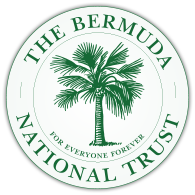Built Heritage: Nonsuch Island
BUILT HERITAGE |Nonsuch Island | September 2022
By Linda Abend and Margie Lloyd, Bermuda National Trust
This is part of a series of architectural articles by the Bermuda National Trust that will highlight some of Bermuda’s endangered historic buildings.
The mention of Nonsuch Island spontaneously brings to mind images of the Bermuda cahow, or petrel, especially their oh-so-cute fluffy chicks. The island however has played other important roles in Bermuda’s history.
The 15½ acre island of Nonsuch is marked on the 1636 map drawn by Willem Blaeu using Richard Norwood’s 1616/1617 survey. With its high cliffs and difficult approach it is not the most accessible of islands and remained part of the ‘common lands’ of St George’s, which generally meant for the use and maintenance of the governor, until 1759 when its lease was sold to Jonathan Burch for £25 plus an annual ‘quit rent’. By 1811 the lease had been acquired by Henry Todd who forbade persons from landing or bringing dogs as he was planning to raise deer. It doesn’t look as if this venture was successful and Nonsuch may have gone through a few more lease owners before being purchased for £15 in 1856 by barrister Duncan Stewart who lived at Ardsheal in Paget.
The yellow fever epidemic that began in the 1850s hit St George’s the hardest. Crewmen and passengers from arriving ships had to be isolated and treated. By 1862 there was a need for a Quarantine Hospital at the East End, and Nonsuch Island, with its elevated situation open to the sea breezes and remoteness from the mainland, was chosen. Duncan Stewart had died in 1861 and it wasn’t until 1865 that his widow sold the island to the Colonial Government for £300.
Click here to read the full Built Heritage article on Nonsuch Island
